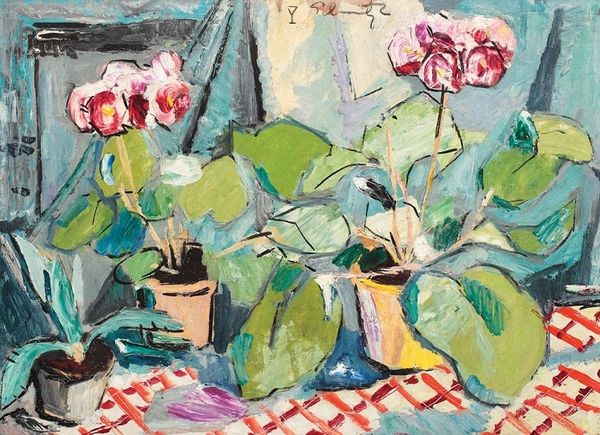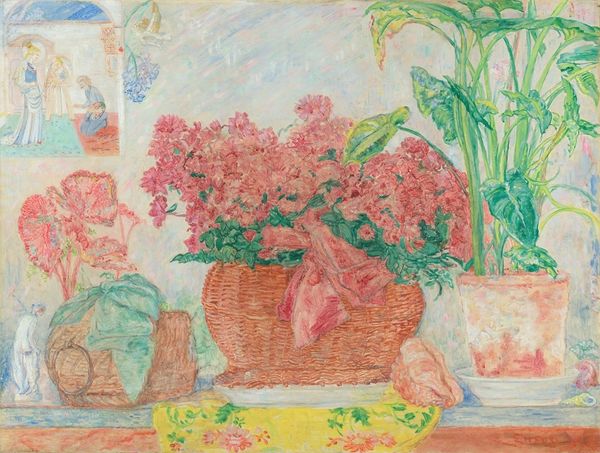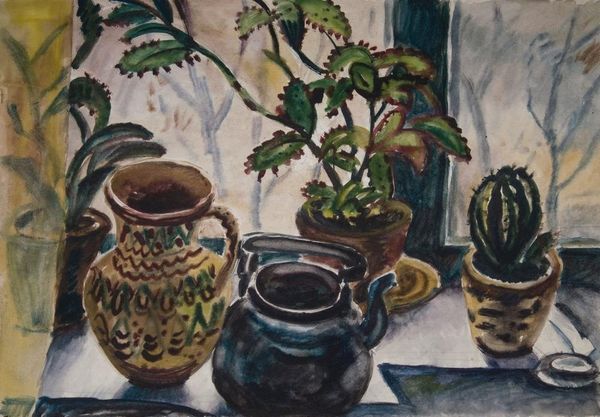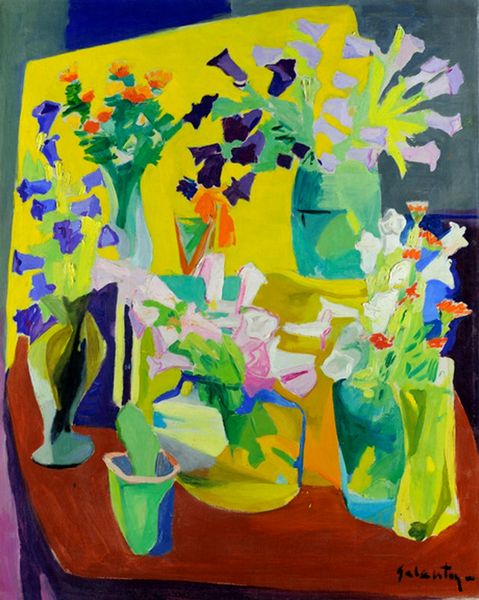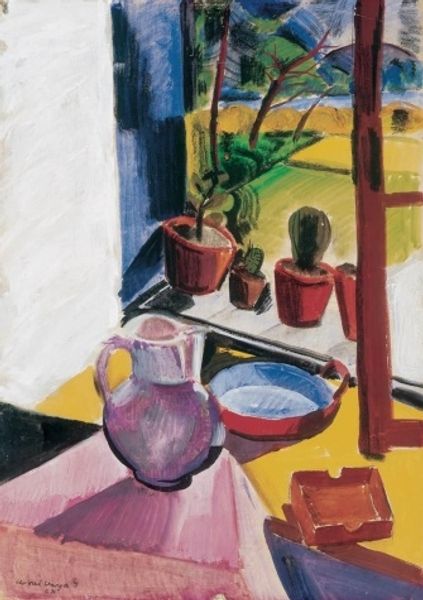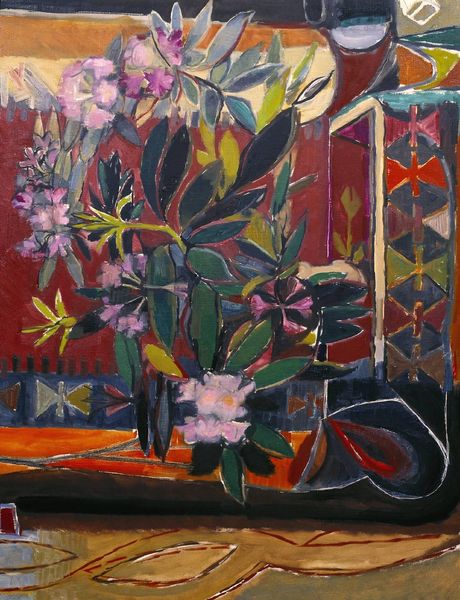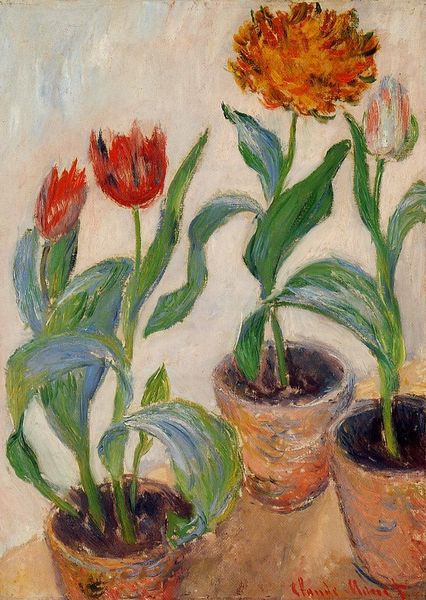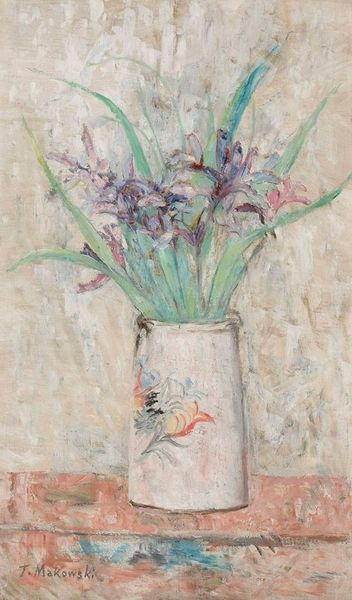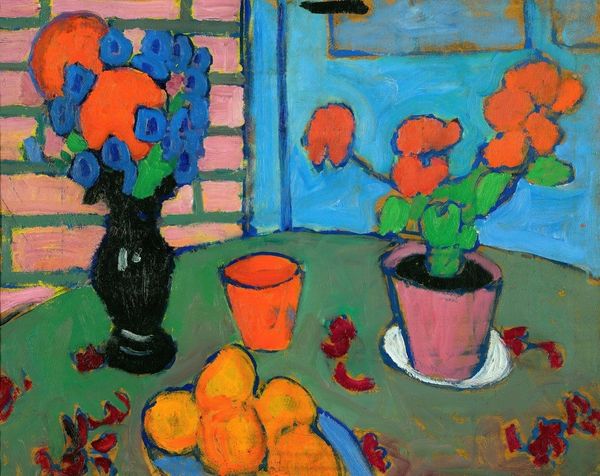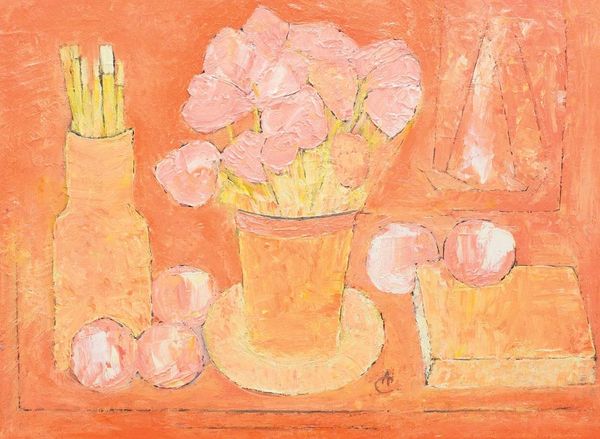
Copyright: John Bratby,Fair Use
Editor: We are looking at John Bratby's "Amaryllis," created in 1970, using acrylic paint. The textures seem very thick and almost aggressively applied. What cultural significance do you see embedded in a work like this, particularly considering its time? Curator: Well, the intensity you’re picking up on is crucial. Bratby, part of the Kitchen Sink School, used a raw, almost confrontational style to depict everyday life, rebelling against the polished aesthetics of the art establishment. How does this raw style engage with the socio-political climate of 1970s Britain? Editor: So it’s less about idealizing beauty and more about reflecting a grittier reality. Do you think his focus on the domestic, like these potted plants, contributes to that rebellion? Curator: Absolutely. By elevating the mundane, he critiques societal values. These aren't idealized landscapes, but intimate, somewhat claustrophobic scenes of the domestic sphere. The plants, while organic, are confined, controlled. Consider the politics of domestic space: who occupies it, whose stories are told or ignored? Bratby challenges traditional hierarchies by placing this scene in the forefront. Is it still shocking today? Editor: Perhaps less shocking, but definitely thought-provoking. I hadn't considered how the very act of painting these commonplace objects could be a statement about whose stories get told. Curator: Exactly. Bratby made the ordinary worthy of attention. Understanding the context changes everything, doesn't it? Editor: It really does. It's not just a still life; it's a commentary. I’ll definitely remember that going forward.
Comments
No comments
Be the first to comment and join the conversation on the ultimate creative platform.
